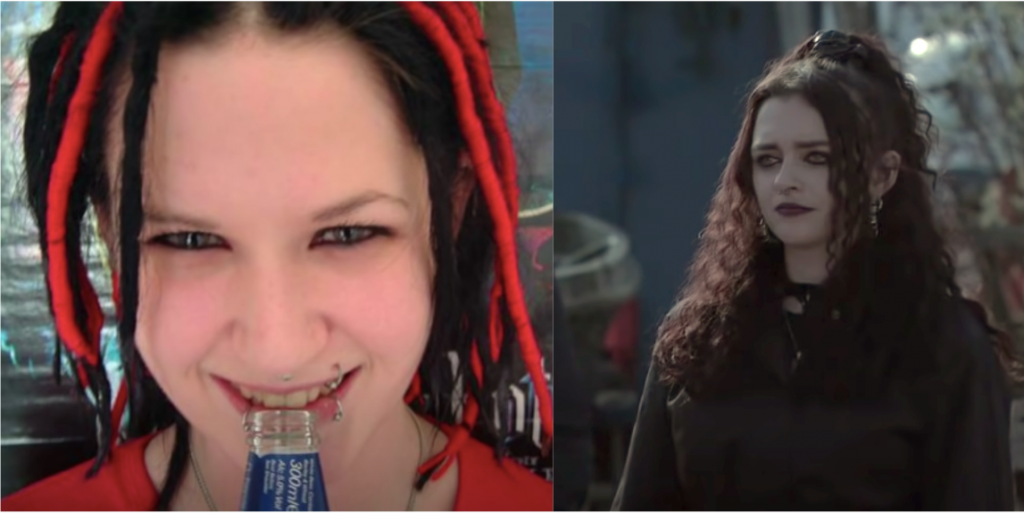
Coronation Street, whose famous cobbles now reside by the water in Salford Quays, has broken the mould with its latest storyline, which shines a light on the violence suffered by young people from alternative subcultures.
The story focuses on Nina Lucas, played by Mollie Gallagher, and her boyfriend Seb Franklin (Harry Visinoni), who are attacked and beaten by Corey Brent (Maximus Evans) and his gang of drunken friends. Following the attack, Nina recovers, however Seb’s injuries are too severe, and the decision is made to turn off his life support.
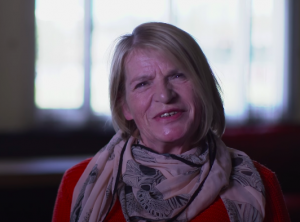
The story was inspired by the tragic murder of Sophie Lancaster in 2007, who was beaten in much the same way by a gang of youths, simply because of her gothic fashion sense.
Sophie’s mother, Sylvia, recaling the day that the soap first contacted her to propose the storyline, said: “We sat there in our office in the centre of Haslingdon one Wednesday afternoon, it was chucking it down. And someone came in and said ‘We’ve just had an email off Corrie!’, to which I said ‘What? Let me have a look.
“They said they wanted to do a story on hate crime, but they didn’t want to use one of the five traditional strands, so they’d decided they wanted to focus on alternative subcultures. And so, they’d contacted me because they knew Sophie’s story.”
Who was Sophie Lancaster?
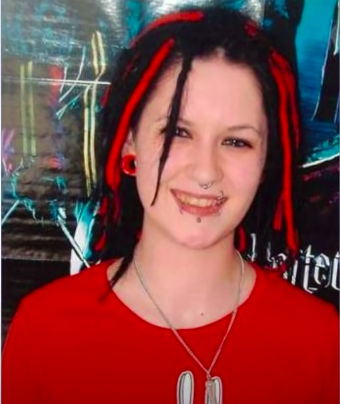
On the 11th of August, 2007, 20-year-old Sophie Lancaster was walking through Stubbylee Park in Bacup, Lancashire, with her boyfriend, Robert Maltby. A group of boys saw the young couple, who were dressed in their dark, gothic aesthetic.
The boys then set upon Robert, beating him severely. Sophie entered the fight in an attempt to protect her boyfriend, receiving fierce blows to her head and body. As a result of her head injuries, Sophie slipped into a coma, and eventually lost her life in hospital, thirteen days later.
Two of Sophie’s attackers were sentenced to life imprisonment for her murder, whilst the other three boys involved in the attack all received prison sentences for grievous bodily harm. Robert Maltby eventually recovered from his injuries, though he spent significant time in a coma, and has suffered memory loss of the events leading up to and during the attack.
Sophie’s murder sent shockwaves through the local community, and profoundly affected many people in the goth and alternative subcultures. Following the establishment of the Sophie Lancaster Foundation, Bloodstock Open Air Festival renamed their second stage ‘The Sophie Lancaster Stage’, as did the grassroots Manchester event Deadbolt Festival.
Sophie’s mother Sylvia, along with many of Sophie’s friends and family, also established a donation fund known as ‘S.O.P.H.I.E’, which stands for ‘Stamp Out Prejudice Hatred and Intolerance Everywhere’. The fund helps support initiatives that work towards building a more tolerant society, including youth groups where teenagers are taught about alternative subcultures, and learn to accept and embrace difference.
How Sophie Inspired Nina:
According to the Crown Prosecution Service, the five categories of hate crime used to extend the term only to violent acts committed based on someone’s disability, race, religion, sexuality, or gender identity. However, several police forces across the country also recognise hate crimes against other protected groups, including those belonging to an alternative subculture such as goth or emo.
Sylvia continues: “So they said, will you come down and meet us and see what you think?. So, then we went down to the studios, and met with the director, some researchers, and a couple of the writers, and they were all so professional, and you could tell that they live, eat, and breathe what they do, so you know full well that whatever they’re going to do, they’re going to do it to the best of their ability, and sensitively.
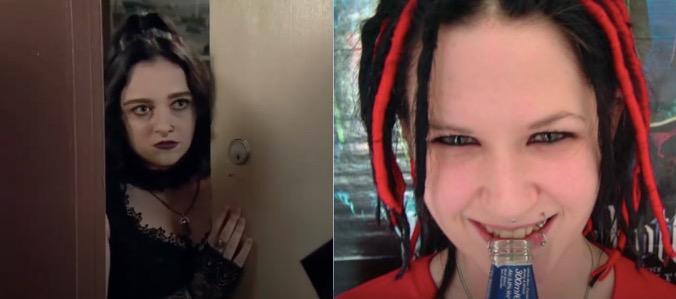
“When you look at how goths are portrayed in the media, they’re given a bad rap really because of the way that they dress and the way that they look – they’re very often seen as bad people. And so what I said was, if they’re going to have a goth in Corrie, please make them a nice goth! We don’t want someone walking around in floods of tears and miserable all day, make it so they’re just a normal person, and that people can relate to them.”
The storyline has certainly struck a chord with a vast proportion of the soap’s viewers – including those who were not aware of Sophie’s story prior to watching the show. Sylvia in particular has been thrilled with the response to Nina’s episodes: “I don’t know what I expected, but it certainly wasn’t what has happened! Catherine Smyth, who wrote the book ‘Weirdo. Mosher. Freak’ about Sophie’s story sold 80 books over the weekend. Our Facebook page has gained 6,000 new followers, and the same with our Instagram and Twitter, it’s just really gone ballistic, people are really interested.
“I just want to say thank you to people who have been ever so supportive – we have the best supporters in the world, I always say that! But now we’re getting new people on board too now which is brilliant.”
The Sophie Lancaster Foundation:

One of the foundation’s main focuses is on education. The charity runs in-school workshops to help emphasise to young people the importance of tolerance and acceptance, which, as Sylvia remembers, are still all too necessary.
“I remember going in shops and things with Sophie, you know, and people would look at her as though she was a different species! And I used to think ‘Oh for gods sake!’. It’s not good enough, we definitely have to work on that, which is a big part of what the S.O.P.H.I.E fund does.
“During Covid, we’ve had to move all our support and resources online, and our workshops have still been going into schools, but via Zoom, which has been brilliant.”
Despite the coronavirus restrictions putting a stop to the majority of The Sophie Lancaster Foundation’s usual fundraising opportunities, there have still been some… innovative fundraising drives set up by their supporters. Sylvia recalls wryly: “A bloke did a naked bike ride through Kew Gardens in Wimbledon! And we’ve had somebody who climbed up Everest for us and put a flag up there. Fundraising is one of our most important needs, and people do so much to help.”
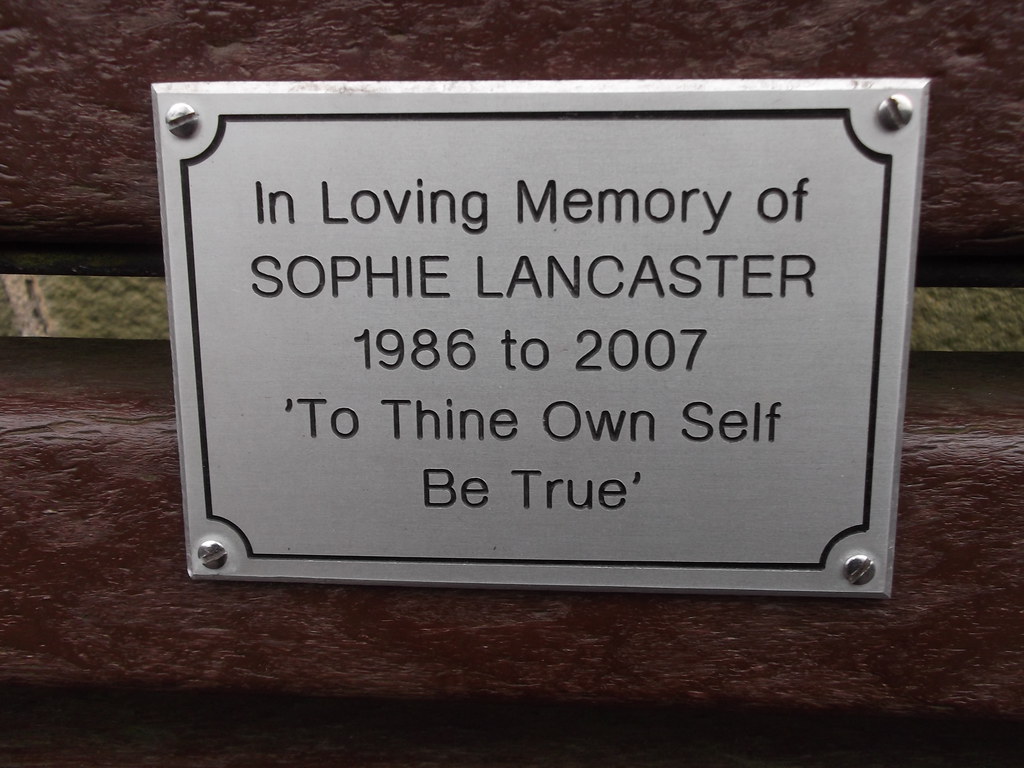
For Sylvia, the foundation’s work has been instrumental in helping her come to terms with the loss of her daughter: “From day one, I’ve always used the foundation as my distraction. Whilst I’m doing the foundation, I don’t have to go there, because I don’t want those feelings. I used to be so angry – it was a burning, burning anger – and I’m not like that now. As time goes on, that anger lessens – it’s got to, you can’t live like that.
“And in some ways, I’m privileged, because I can talk about it, and while I can talk about her, she’s still here. I was talking to a woman recently whose two daughters had been murdered in Birmingham a few years ago, and she was saying she doesn’t get chance to talk about her daughters, which I thought was really sad. So, having the foundation has always helped.”
Hate crimes against alternative subcultures:
In 2013, Greater Manchester Police announced that they would be recording acts of violence against people from alternative subcultures as hate crimes. Since then, several other police authorities have joined them, including the Lancashire Constabulary, who cover Bacup, the town where Sophie lost her life. However, as of December 2020, the House of Commons has yet to recognise targeting someone because of their lifestyle or subculture as an official hate crime.
Responses to the storyline:
Many alternative teenagers and young adults have been profoundly moved by this Coronation Street storyline, and have been sharing their views on social media.
One viewer from Whitby paid her tribute to Sophie after the latest episode aired, taking flowers to her memorial bench, which overlooks the ocean.
After watching Coronation street on @itv last night had to go and lay some flowers for Sophie Lancaster at her bench in Whitby #ripsophie #flowersforsophie pic.twitter.com/BNWbhVF97n
— Helen (@eastermoon) May 6, 2021
Many others posted about how difficult the storyline was to watch, knowing its real-life inspiration.
It’s heartbreaking to watch Nina and Seb go through that but it must be even more heartbreaking for Sophie Lancaster’s family. My heart goes out to them and I hope this storyline helps raise awareness ❤ #Corrie
— 💛💫🌻✨ (@corriedalexo) May 5, 2021
So much more devastating when you realise this happened in real life. Why would you ever hurt someone for being different? RIP Sophie Lancaster. #Corrie pic.twitter.com/hzynCE8fDR
— Sean McLachlan (@Sean__McLachlan) May 7, 2021

For journalist and photographer Sophie Chalk, both Sophie’s real-life story and Nina’s fictional one impacted her immensely. She comments that: “As someone who’s been part of the alternative scene since around 2007, I am not new to seeing hostility and abusive comments towards those with gothic, emo, scene and punk fashion and taste in music.
“It’s interesting to see this covered in a soap properly; I think that’s been way overdue, because I feel that even though I’d like to say that attitudes have improved now, some people still assume that you’re a troublemaker, that you’re depressed and morbid, or other false assumptions based on your outfit.
“Nina is such a sweet character and it broke my heart to see her be chased, hurt and called a freak and an ‘it’, as these words are sadly familiar to me too. It made me think back to Sophie’s attack and bring up all the things that she must have felt at the time – I empathised with the story hugely.”
Sophie’s Legacy:
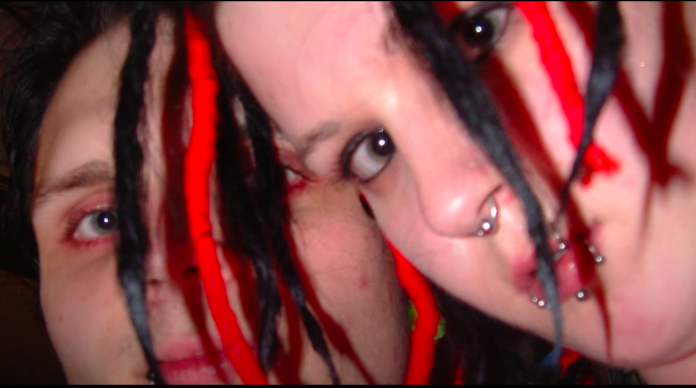
When asked what she most wants people to learn from Sophie’s story, and from Nina’s fictional tale, Sylvia’s answer is profoundly simple: “I just want people to understand that because somebody looks different to you, or wears different clothing to you, if you scratch back the surface, we’re all the same underneath. Recognise people for who they are, not for who you think they are, and we won’t go far wrong if we do that.”
• If you would like to get involved and support The Sophie Lancaster Foundation, you can find all the relevant information on their website.















Recent Comments